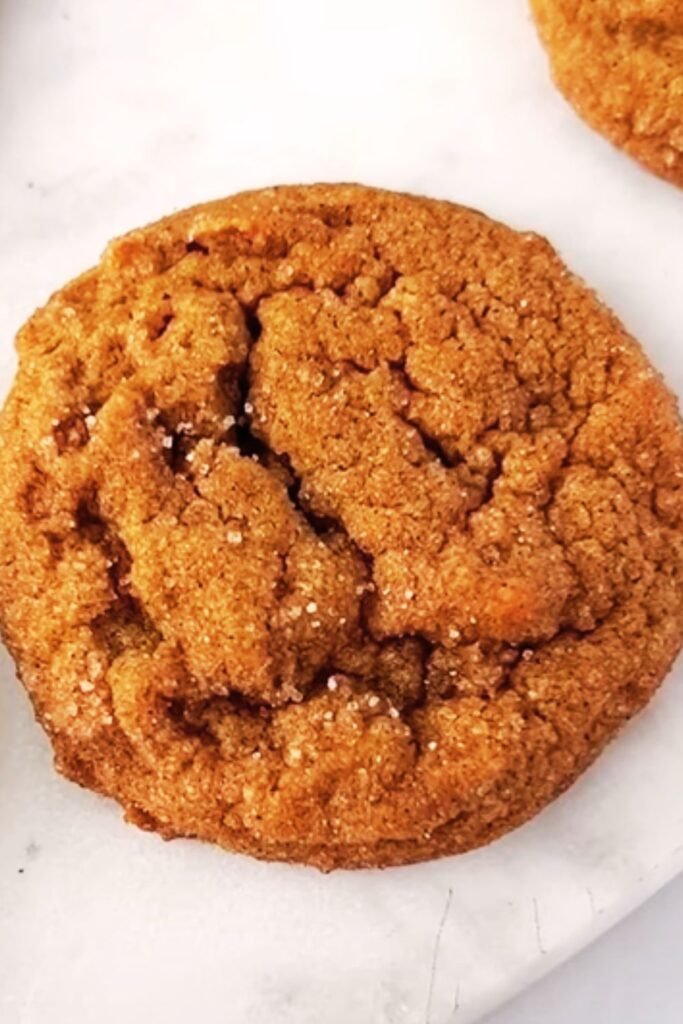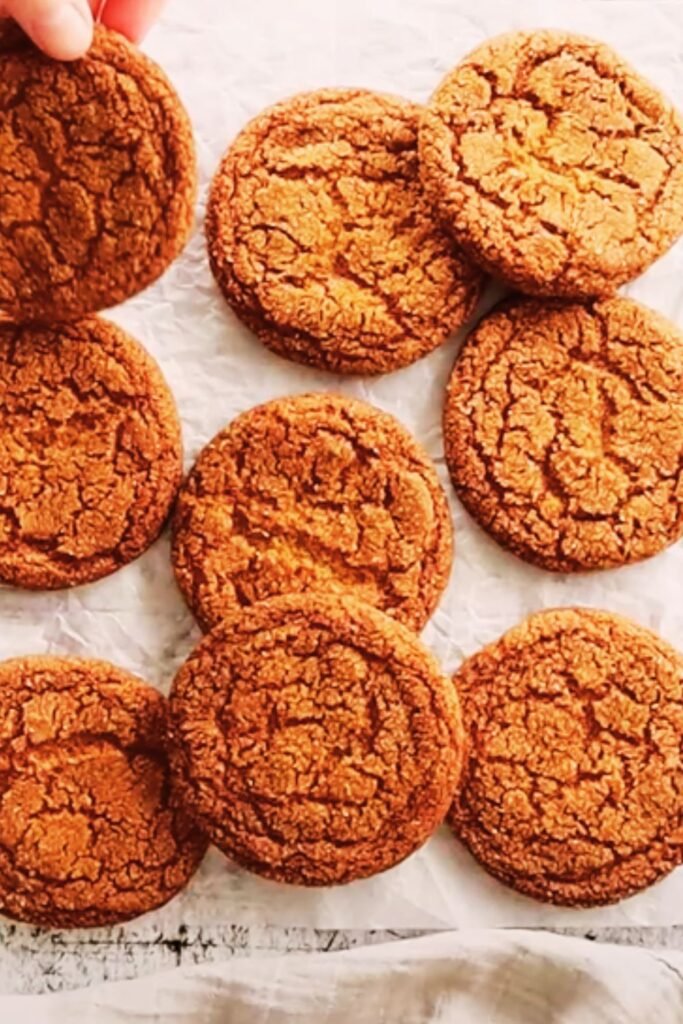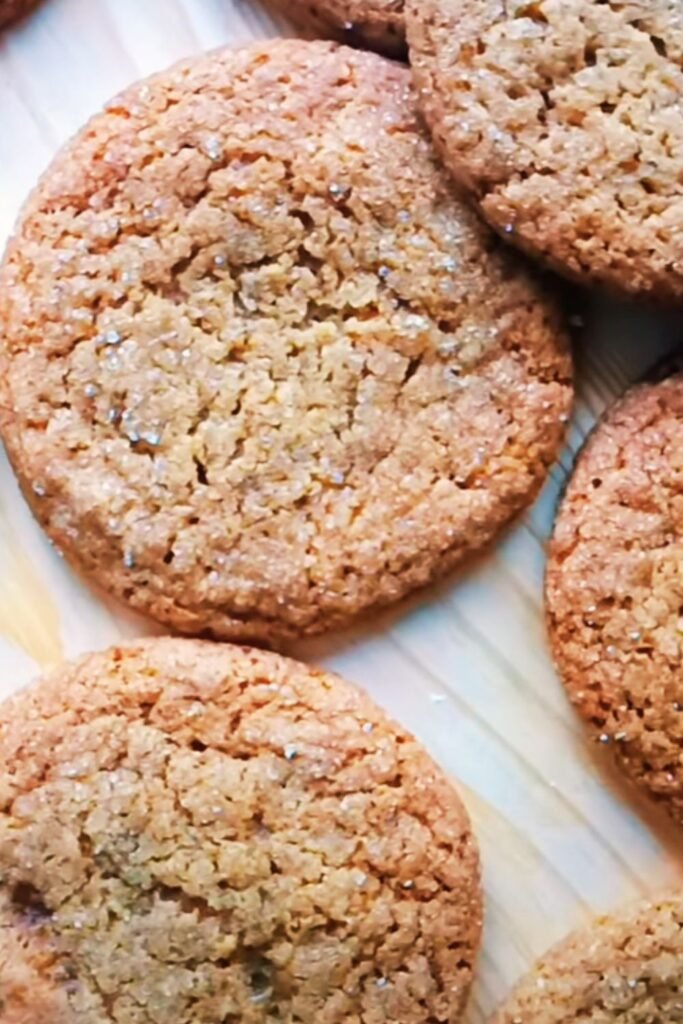There’s something magical about the aroma of ginger, cinnamon, and molasses wafting through my kitchen on a cool afternoon. It’s the kind of smell that wraps around you like a warm hug, promising something delicious is about to emerge from the oven. I’ve spent years perfecting my ginger molasses cookie recipe, and today I’m thrilled to share it with you. These aren’t just any cookies—they’re the perfect balance of soft and chewy, with a crackly top and a deep, rich flavor that keeps you reaching for just one more.
What Makes These Ginger Molasses Cookies Special?
Before diving into the recipe, let me tell you why these cookies have become my signature bake. First, they use a combination of fresh and ground ginger for a complex flavor profile. Second, the molasses gives them not just a distinctive taste but also that perfect chewy texture. And third, they’re incredibly versatile—perfect for holiday cookie exchanges, afternoon tea, or midnight snacks.
I’ve brought these cookies to countless gatherings, and the plate is always empty by the end. I’ve had friends who claim they don’t like molasses suddenly change their minds after one bite. That’s the power of a truly great cookie!
The Science Behind Perfect Ginger Molasses Cookies
Understanding a few key principles has helped me elevate these cookies from good to unforgettable:
- Butter temperature: Room temperature butter creams better with sugar, creating tiny air pockets that give the cookies lift.
- Molasses chemistry: Molasses is acidic and helps activate the baking soda, creating that perfect crackled top.
- Chilling the dough: This step is non-negotiable! It allows the flavors to meld and prevents the cookies from spreading too much during baking.
- Proper measuring: Using weight rather than volume measurements ensures consistency every time.
Now, let’s get into what you’ll need to make these delicious treats.
Ingredients
For approximately 24 cookies, you’ll need:
| Ingredient | Amount | Notes |
|---|---|---|
| All-purpose flour | 2¼ cups (280g) | Unbleached preferred |
| Ground ginger | 2 teaspoons | Fresh is best, but jarred works well |
| Fresh ginger | 1 tablespoon | Peeled and finely grated |
| Ground cinnamon | 1 teaspoon | Ceylon cinnamon has a milder flavor |
| Ground cloves | ½ teaspoon | A little goes a long way |
| Ground nutmeg | ¼ teaspoon | Freshly grated if possible |
| Baking soda | 2 teaspoons | This helps create that crackly top |
| Salt | ½ teaspoon | I use fine sea salt |
| Unsalted butter | ¾ cup (170g) | Room temperature |
| Dark brown sugar | 1 cup (200g) | Light brown works too, but dark gives better flavor |
| Egg | 1 large | Room temperature |
| Vanilla extract | 1 teaspoon | Pure, not imitation |
| Molasses | ¼ cup (85g) | Unsulphured, not blackstrap |
| Granulated sugar | ⅓ cup (67g) | For rolling the dough balls |
Equipment You’ll Need
- Stand mixer or hand mixer
- Measuring cups and spoons
- Digital kitchen scale (for precise measurements)
- Mixing bowls
- Baking sheets
- Parchment paper or silicone baking mats
- Cookie scoop or tablespoon
- Cooling rack
- Airtight container for storage
Step-by-Step Instructions
Preparing the Dough
- Combine dry ingredients: In a medium bowl, whisk together the flour, ground ginger, fresh grated ginger, cinnamon, cloves, nutmeg, baking soda, and salt. Set aside.
- Cream butter and sugar: In the bowl of a stand mixer fitted with the paddle attachment (or using a hand mixer), beat the butter and brown sugar on medium speed until light and fluffy, about 3-4 minutes. Don’t rush this step—proper creaming creates that perfect texture!
- Add egg and flavorings: Beat in the egg until fully incorporated, then add the vanilla extract and molasses. The mixture might look curdled at this point, but don’t worry—that’s normal.
- Combine wet and dry ingredients: With the mixer on low speed, gradually add the dry ingredients to the wet ingredients, mixing just until combined. Be careful not to overmix, as this can make your cookies tough.
- Chill the dough: Cover the bowl with plastic wrap and refrigerate for at least 2 hours, preferably overnight. This step is crucial for developing flavors and ensuring the cookies don’t spread too much during baking.

Baking the Cookies
- Preheat and prepare: When you’re ready to bake, preheat your oven to 350°F (175°C). Line two baking sheets with parchment paper or silicone baking mats.
- Form the cookies: Place the granulated sugar in a small bowl. Using a cookie scoop or tablespoon, portion the dough into balls about 1½ inches in diameter (about 2 tablespoons of dough per cookie). Roll each ball in the granulated sugar to coat completely.
- Space and flatten: Place the sugar-coated dough balls on the prepared baking sheets, spacing them about 2 inches apart. For thinner, chewier cookies, press down slightly with the bottom of a glass or measuring cup.
- Bake: Place in the oven and bake for 10-12 minutes, just until the edges are set but the centers still look slightly underdone. The cookies will continue to firm up as they cool.
- Cool properly: Allow the cookies to cool on the baking sheets for 5 minutes before transferring them to a wire rack to cool completely.

Troubleshooting Common Issues
Even experienced bakers run into problems sometimes. Here are solutions to common issues with ginger molasses cookies:
| Problem | Possible Cause | Solution |
|---|---|---|
| Cookies spread too much | Butter too warm, dough not chilled enough | Make sure butter is just at room temperature, not melted; chill dough longer |
| Cookies too hard | Overbaked, too much flour | Bake for less time; measure flour by weight |
| Cookies too cakey | Too much flour, not enough fat | Reduce flour slightly; ensure proper butter amount |
| Not enough ginger flavor | Old spices | Use fresh spices; try increasing fresh ginger |
| Cookies don’t crack on top | Not enough leavening, oven temperature too low | Check baking soda freshness; verify oven temperature with thermometer |
Variations to Try
What I love about this basic recipe is how adaptable it is. Here are some of my favorite variations:
- Extra Spicy: Double the ground ginger and add ½ teaspoon of black pepper for cookies with real heat.
- Orange-Infused: Add 1 tablespoon of orange zest to the dough for a bright citrus note.
- Crystallized Ginger: Fold in ½ cup of finely chopped crystallized ginger for bursts of intense flavor and chewy texture.
- Chocolate-Dipped: Once cooled, dip half of each cookie in melted dark chocolate and let set for a decadent twist.
- Holiday Special: Add ¼ teaspoon of cardamom and roll in turbinado sugar for a festive sparkle.
Storage Tips
These cookies stay soft and chewy for days when stored properly. Here’s what I recommend:
- Room temperature: Store in an airtight container with a slice of bread (to maintain moisture) for up to 5 days.
- Freezing baked cookies: Place in freezer bags with parchment between layers. They’ll keep for up to 3 months. Thaw at room temperature.
- Freezing dough: Roll into balls and freeze on a baking sheet, then transfer to a freezer bag. Bake directly from frozen, adding 2-3 minutes to the baking time.

Serving Suggestions
These ginger molasses cookies are delicious on their own, but there are several ways to elevate them for special occasions:
- Serve warm with a scoop of vanilla ice cream for a simple but impressive dessert.
- Pair with hot apple cider or chai tea for an afternoon treat.
- Create ice cream sandwiches by placing a scoop of cinnamon ice cream between two cookies.
- Add them to a holiday cookie platter with complementary flavors like shortbread and chocolate peppermint cookies.
- Crumble over roasted pears or apples for a quick fruit crisp.
- Serve alongside a cheese plate for an unexpected sweet element—they pair surprisingly well with aged cheeses!
Nutritional Information
For those keeping track of their intake, here’s the approximate nutritional information per cookie (based on 24 cookies per batch):
| Nutrient | Amount per Cookie |
|---|---|
| Calories | 145 |
| Total Fat | 6g |
| Saturated Fat | 3.5g |
| Cholesterol | 20mg |
| Sodium | 125mg |
| Total Carbohydrates | 22g |
| Dietary Fiber | 0.5g |
| Sugars | 12g |
| Protein | 1.5g |
Why These Cookies Are a Year-Round Favorite
While ginger and molasses might make you think of fall and winter holidays, I find myself making these cookies throughout the year. They’re perfect for summer picnics paired with lemonade, springtime tea parties, or as an after-school treat when the kids need a pick-me-up. There’s something comforting about the spicy-sweet flavor that transcends seasons.
What makes them particularly special is how they connect generations. My grandmother used to make a similar cookie, though hers was a bit harder and snappier. I’ve adapted her recipe to create these softer, chewier versions that my children love. It’s how recipes should evolve—maintaining the heart of tradition while embracing modern preferences.
The History Behind Ginger Molasses Cookies
Ginger cookies have a fascinating history that spans centuries and continents. Ginger itself was one of the first spices traded along the ancient Silk Road, and gingerbread recipes date back to Medieval Europe. In America, molasses became popular during colonial times as a byproduct of the sugar trade.
The combination of ginger and molasses in cookies became particularly popular in New England, where trading ships brought back molasses from the Caribbean. These cookies were valued not just for their flavor but for their excellent keeping qualities—important in the days before refrigeration.
The modern soft ginger molasses cookie evolved from these earlier, harder gingersnaps and gingerbread, adapted to suit changing tastes. Today, they represent a perfect blend of historical tradition and contemporary baking techniques.
Frequently Asked Questions
Q: Can I use blackstrap molasses in this recipe?
A: I don’t recommend it. Blackstrap molasses has a much stronger, more bitter flavor than regular unsulphured molasses. It will dramatically change the taste of your cookies, and not in a good way. Stick with regular unsulphured molasses for the best flavor.
Q: My cookies didn’t develop cracks on top. What went wrong?
A: The characteristic cracks in ginger molasses cookies come from the right balance of leavening and proper oven temperature. Make sure your baking soda is fresh (replace every 6 months), and check that your oven temperature is accurate with an oven thermometer. Also, rolling the dough balls in sugar helps create that crackly surface.
Q: Can I make these cookies gluten-free?
A: Yes! I’ve had success using a 1:1 gluten-free flour blend. Look for one that contains xanthan gum for the best texture. The cookies might spread a bit less, so you’ll want to flatten them slightly before baking.
Q: How do I know when the cookies are done if they’re supposed to look underdone in the center?
A: This can be tricky at first, but you’re looking for set edges that have lost their shine, while the centers still look slightly puffy and soft. The cookies should be just starting to brown at the very edges. If you’re unsure, it’s better to underbake than overbake—they’ll continue to firm up as they cool.
Q: Can I reduce the sugar in this recipe?
A: Sugar does more than just add sweetness—it affects texture, spread, and moisture retention in cookies. You can reduce the brown sugar by up to ¼ cup, but be aware that it will change both the flavor and texture of the final cookie. I wouldn’t recommend eliminating the granulated sugar coating entirely, as it helps create that characteristic crackly surface.
Q: My dough is very sticky. Is that normal?
A: Yes, the dough is supposed to be somewhat sticky before chilling due to the molasses. After chilling for at least 2 hours, it will firm up and be much easier to handle. If it’s still too sticky to roll into balls, you can either chill it longer or very lightly dust your hands with flour while forming the cookies.
Final Thoughts
Baking is one of my favorite ways to show love and create memories. These ginger molasses cookies have become a signature recipe in my household—the one friends request and family members look forward to. They’re comfort and joy wrapped up in a perfectly spiced package.
I hope you’ll give them a try and perhaps start your own tradition with them. There’s something profoundly satisfying about passing down recipes, tweaking them to make them your own, and watching faces light up with that first bite.
Remember that baking is part science, part art. Don’t be afraid to play with the spice levels to suit your taste, and don’t worry if your first batch isn’t perfect—each time you make these cookies, you’ll get to know the dough better and develop your own instincts for when they’re just right.
Happy baking, and may your kitchen always be filled with the warm, spicy scent of ginger and molasses!